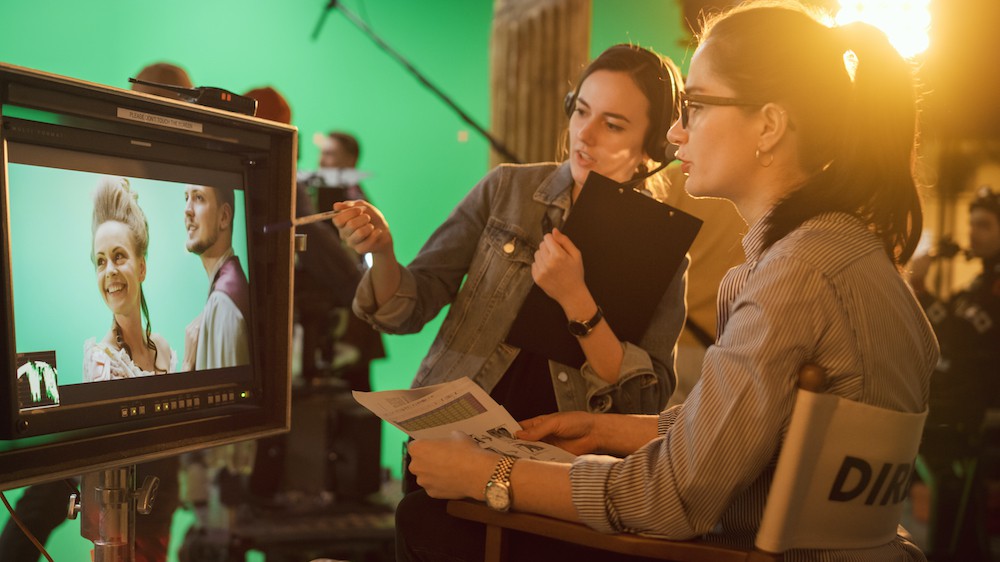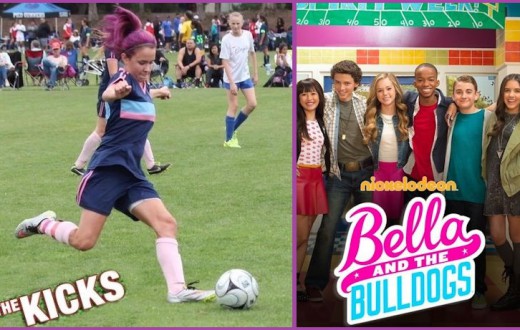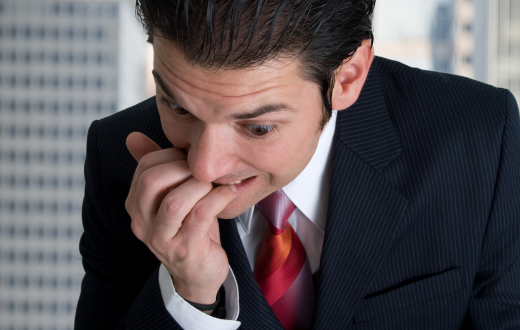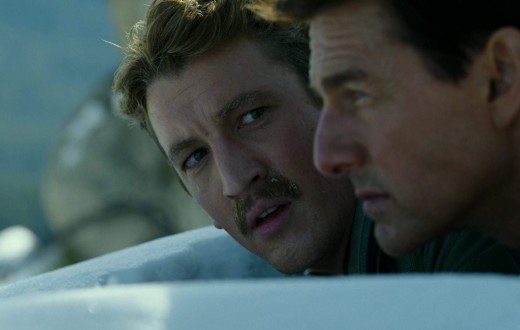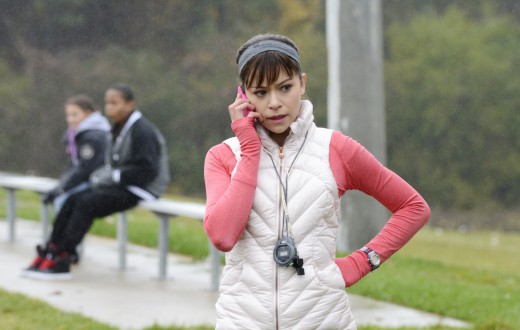Film Set Terms to Know
Film sets are a magical place to work, but they can also be very confusing if you’re new on set. Film sets seem to have their own language, and if you suddenly find yourself on set without knowledge of the terms, you’re going to be very confused. Even just doing a once-over of this list prior to working on a film or TV set should help you out, but if you’ll be there for the full run of the show, you should probably take some time and learn these. You’ll hear most of them multiple times a day!
10/1
I’m going to the restroom. This often confuses newbies on set as to why someone wouldn’t just say “I’m going to the restroom”, but apparently it’s more polite and film etiquette to use code
Abby Singer
Being the second-to-last shot of the day, it is named after an A.D. who, as one story goes, toward the end of the day would get the crew to move faster by promising them that the next shot would be the last for the day, only to have another shot to capture and be the new “last shot” of the day.
Above the Line
Above the line ****is the costs of making a movie associated with the major creative talent, including the director, actors, writers, and producers. Films with special effects will also have a greater number of above the line costs than films without special effects.
ADR (Additional Dialogue Recording)
The process of re-recording lines after shooting to replace poor-quality sound or slightly alter line delivery. Often used to eliminate naughty swear words to gain that audience-friendly PG-13. Occasionally used to re-dub one actor’s voice with another: see, for example, Darth Vader, where James Earl Jones replaced David Prowse. Otherwise known as “looping”.
Alan Smithee
A notorious pseudonym used by directors unwilling to have their own name slapped on a film when they weren’t happy with the final cut. After the ironic calamity that was Burn Hollywood Burn, a film about the practice that was itself eventually credited to one Alan Smithee, it’s been retired.
Apple Box
A wooden box closed on all six sides, with finger grips cut into two opposing sides for carrying. It is ubiquitous on set and used for sitting, standing, temporary platforms, and more. It was most likely developed from using open-top crates used by apple pickers, and the name has stuck. Apple boxes come in a variety of standardized sizes, including full, half, quarter, and pancake. They are used for many different applications.
Back projection
An age-old technique where pre-recorded footage appears behind the actors being filmed, often used for driving scenes (think Airplane! or any classic 1950s movie). Nowadays, it’s largely been replaced with greenscreen, but is occasionally used for nostalgia’s sake in films like Kill Bill.
Back-to-One
This refers to doing another take and having everyone (actors, camera, crew, etc.) go back to their starting positions for the shot. Usually called by the AD.
Banana
This is not the director calling for a snack or delivering the punchline to a joke. It is a direction given to an actor. It means that when moving toward or away from the lens, the actor needs to walk in an arc in order to accomplish a cinematic goal such as revealing something in frame at the proper moment, or for making the movement itself look natural on camera.
Basecamp
This is where the makeup, costume, and cast trailers are located, as well as crew parking and catering. It’s the largest base and first point of call when arriving for work.
Best Boy
A Best Boy is the assistant, or technical assistant for the key grip or gaffer. The best boy is responsible for coiling and routing all of the power cables needed to run the lights. The best boy may also schedule what people and equipment are needed on a given day of a shoot.
Blacklist
Once a source of shame for the movie industry, this originally referred to actors and directors shunned by Hollywood during the heights of McCarthyism in the 1950s for alleged ties to Communism. Now, however, it refers to the annual “blacklist”, an insider survey that compiles the year’s (allegedly) best unproduced screenplays. It’s resulted in The King’s Speech, Argo, and… Cop Out.
Blocking
The process of running through a scene prior to filming to decide where the actors will move and where lighting and cameras should be placed.
Boom
The large fuzzy microphone on the end of a pole that looks a bit like an old dog. It floats above the actors, close enough to pick up dialogue but, ideally, far enough up or down that it doesn’t appear in the shot.
Call sheet
A list, usually created by the first assistant director, of actors who will be required on set for each day’s shooting, what scenes are scheduled and which locations will be used.
Champagne Roll
Usually at 100 film rolls, or sometimes 100 hard-drive downloads on a digital shoot, into a shoot, the cast and crew get a celebratory glass of champagne.
Change pages
If a script is altered while filming is underway, any changes are handed out onset in the form of “change pages”. These are normally a different color to the original script. A script with a lot of changes during filming can look like a beautiful rainbow.
Check the Gate
A term called by the A.D. before a change in camera position. At this time, the camera assistant will examine the aperture plate/gate of the film camera for any built-up debris that intrudes onto the image area. Although technically only applicable to shoots using film, check the gate can also signify the checking of the last few seconds of the last shot in digital to see that both the picture and sound have been recorded.
Choker/Choker C.U.
A shot that uses the bottom of the frame line to “choke” the actor by cutting him or her off just below the chin.
Clapper
A board displaying key information about the scene being filmed (scene number, take number, film name), filmed by the camera before each take. On top (or bottom) is a piece of wood on a hinge (traditionally painted in black and white stripes), which claps down to the board, allowing for audio-visual synchronization. Also known as “clapboard”.
Clean speech
A take in which there were no errors with dialogue recording.
Continuity
The kind of logic implied in the association of ideas between edited shots. “Cutting to continuity” emphasizes smooth transitions between shots, in which space and time are unobtrusively condensed. “Classical cutting” emphasizes dramatic or emotional logic between shots rather than one based strictly on considerations of time and space. In “thematic montage” the continuity is based entirely on ideas, irrespective of literal time and space. In some instances, “continuity” refers to the space-time continuum of reality before it is photographed.
Continuity report
A list specifying everything that happened when a scene was filmed, including weather conditions and camera settings. This is meant to prevent continuity errors creeping in between takes or during reshoots. Also known as the “continuity script”.
Cookie
Shorthand for Cucoloris, similar to a flag or cutter, but usually a solid material with an abstract pattern that passes light, creating patterns on backgrounds or subjects. It is used to break up light, giving it a more natural feel.
Cowboy
A shot that is framed just above the knees of the subject.
Craft service/Crafty
The catering unit. Typically serves apple crumble and chips with everything. A film with “clean” catering, like many Zack Snyder efforts, generally ditches the chocolate bars and has lots of dried fruit and nuts on offer instead.
Crane shot
A shot taken from a special device called a crane, which resembles a huge mechanical arm. The crane carries the camera and cameraman, and can move in virtually any direction.
Crew Call
The time of day shooting is scheduled to begin for the day. Your call time may vary.
Crossing
This is said by someone crossing in front of the camera, before doing so, in order to warn the operator that the viewfinder is going to go black as they obliterate the frame momentarily. Crossing close to the camera is generally bad form, and it should be avoided as much as possible. However, when it is unavoidable, calling out “crossing” is a standard on-set courtesy.
Cutter
Also known as a flag, it is used to “cut” the light and define the area lit. You can use a cutter to create a hard or soft edge, depending how close to the light it is placed. Please note the terms “cutter” and “flag” are used interchangeably; however, strictly speaking, when you are controlling spill light from striking something out of the shot (such as the camera lens or a crew person), you are flagging that light. When you are setting a precise shape for the light that is in the shot (for example, a set light), you are using a cutter. Some grips will use special names depending on the size or shape of the flag, but there is no penalty for switching the terms “cutter” and “flag.”
Dailies
The prints of footage shot the previous day, often viewed by the director and producers at the end of each day to monitor progress. Also known as “rushes”. Can cause side-effects ranging from nervous breakdowns to over-confidence back at the studio.
Dolly
A small platform for the camera, designed to roll along special tracks. Although Steadicams have reduced their use, dollies have certain unique strengths. In particular, they’re still used for the so-called Vertigo shot, where the camera zooms in while the dolly moves backwards, severely altering the perspective.
Dope sheet
A list of scenes that have already been filmed, usually compiled by the assistant cameraman.
Establishing shot
Usually an extreme long or long shot offered at the beginning of a scene or sequence providing the viewer with the context of the subsequent closer shots.
Floppy
It is a large rigid flag, usually four feet on each side, with an extra flap that is held in place with hook-and-loop fabric. When you want to block light, you set up the floppy and then release the extra fabric.
Flying in
It means that the necessary item or person is on its/their way to set.
Foley
Named after Jack Foley, this is the art of simulating certain noises in post-production to enhance particular moments. Foley artists might smack a piece of leather to get a good punching sound, or snap a carrot when a bone is broken. For scenes of disembowelment, the squelching of pasta is a favorite.
Gate
When shooting on film, you’ll often hear the assistant director shout, “Cut! Check the gate!” This is to ensure that the camera and film is free of any impurities or blockages (a hair in the way, for instance) that would render what’s been filmed unusable or call for another take. The phrase is sometimes still heard on a digital set, but only for auld lang syne since there’s no film gate.
Greek
To modify the name of a product so that the package looks the same but the brand name on it is not readable. This is important to do when you use a trademarked product, such as Coke™, in your shot but don’t have permission. The term probably developed as words were obscured by adding bits of tape to the letters. This resulted in a subtle change that often resembled Greek lettering. It is a very effective way of dealing with concerns over trademark use and can be used on product names and logos.
Greenscreen
A technique where actors perform in front of a stark, monochromatic background, usually bright green or blue. This is then replaced with a background image, often with CGI. Also known as “bluescreen” or “chromakeying”.
Hollywood
To “Hollywood” something is to handhold it and not set up a stand for it. Crew will often Hollywood reflectors, bounce cards, or small light fixtures such as china balls. This allows for fast adjustments and also to move with the actors.
Honeywagon
Bathroom. Usually a trailer with male and female restrooms.
Hot Brick
A fully charged walkie-talkie battery. When starting out you need to supply these to your superiors throughout the day.
Hot points/Points
Grips will call out this term to indicate they are carrying something such as a light stand with the tips pointing forward. Look out if you hear this.
Hot Set
A set that is currently in use for filming or needs to be left as is because filming will return there in the near future. Don’t touch or move the props or set dressing, or else prepare to feel the wrath of the art department.
Insert
A close-up, often filmed by the second unit, usually of an object.
Magic hour
The short time just before sunset when light levels change dramatically and very quickly, enabling golden shots that will look “very Terrence Malick”. See the opening shot of Hot Fuzz or virtually any Michael Bay movie.
Martini
This is the last shot of the day. Why? Go ask someone who drinks. Usually called by the A.D.
Matte shot
A shooting technique where painted artwork (ordinarily on glass) is combined in-shot with live action, to create the illusion of a grand backdrop. It’s old-fashioned, but still used by Peter Jackson and others for those invaluable epic visuals.
Meal Penalty
Free money Union members are given because they didn’t feed you on time.
Mickey/Mighty
These terms refer to open-face light fixtures made by Mole-Richardson. Similar to the Redhead and Blonde, the Mickey is a 1,000-watt light, while the Mighty is a 2,000-watt light fixture.
MOS
There are many myths and lore behind this term, which means that the camera is recording, but audio is not being recorded. It is often used when shooting insert shots. The reason a shot is slated “MOS” is so that the editorial department doesn’t waste time trying to find the audio for the shot or wonder why people are talking during the take. The most likely explanation for MOS is that it means “Motor Out of Sync,” and it was written on a slate so that the editor would de-couple the sound head on the Moviola upright editing machine for that shot so that only the picture was rolling and not the sound.
MOW (Make Own Way)
An actor or crew member will transport themselves to set for their call time as opposed to being picked up and driven by the transport department. Don’t muck this one up or you’ll be waiting for the public bus and late to work.
Negative Fill
This is when you use a flag or the black side of a show card to prevent light from reflecting on a subject. It is used much the same way you would use a bounce card to provide fill.
New Deal
Moving on to a new camera setup for that scene. The Director and all involved are happy with the takes and “new deal” will be called out by the ADs.
Obie light
A light mounted on top of the camera that puts a reflective glow into the eyes of the on-camera talent. It was reportedly created for Merle Oberon by her husband and cinematographer, Lucien Ballard.
OTS (Oh – Tee – Es)
This means “over-the-shoulder shot,” where two characters are having a dialog and the camera is positioned over the shoulder of one actor to capture the other actor. OTS shots can be either “clean” as in a clean single, where it is a close-up of your subject without anyone else intruding in the frame, or “dirty,” usually a close-up of an actor with a part of another actor in the frame. This is used when not having a small part of that other actor in the close-up would be jarring.
Overcranking
The act of speeding up the frame rate on a film camera, so that more frames are captured. Enables the footage to be played in slow motion. Undercranking has the opposite effect. Dates back to when cameras were hand-cranked.
Pickup
Doing another take of a shot, but only part of it, starting part-way through the beginning. For example, the first half was good, so you are only going to retake the second half. Usually this refers to a shot which only has part of the dialog or action.
Picture’s Up
They are about to roll and shoot an actual take.
Pre-Call
When a department or individual has a call time earlier than the crew call. Be sure to check your actual call time rather than the crew call, as it may be different. It’s always embarrassing to receive a call from your boss while you are still in bed.
Along with “Check the gate!”; “Print it!” is a fun but antiquated catchphrase on film sets. It means that the latest take of a scene was good, that everyone’s happy they have the shot needed and that it should be developed.
Rack focusing, selective focusing
The blurring of focal planes in sequence, forcing the viewer’s eye to “travel” with those areas of an image that remain in sharp focus.
Redhead/Blonde
These refer to 1,000-watt and 2,000-watt (respectively) open-face tungsten halogen light units. The name derives from lightweight light fixtures made by Ianero back in the day. The 1,000-watt fixture was red/orange in color and the 2,000-watt fixture was yellow, hence the redhead and blonde references.
Re-shoots
Footage filmed after shooting wraps, re-doing scenes from the film rather than adding additional scenes or minor reaction shots etc. The existence of re-shoots is often seen as evidence that a film is in trouble, so filmmakers will go out of their way to describe re-shoots as pick-ups.
Rhubarb
Background conversation by extras. So-called because extras were often asked to mutter the word “rhubarb” to produce the effect of genuine conversation, with their mouths moving convincingly. Also known as “walla”.
Roll sound/camera
The A.D. calls for audio and camera to start.
Room tone
Similar to wild sound, since there is no picture being recorded, but different because you are recording the sound of the environment with no dialog. This is done so you can use the recording to replace any audio that has unwanted noise without hearing the background noise of the room disappear. If your camera is also your audio-recording device, it is customary to shoot a slate that says “Room Tone” and to specify what scene it is for.
Rotoscoping
Little used nowadays, this was once an invaluable technique for producing high quality animation and was a favorite method in Soviet cartoons. It refers to the time-consuming process of shooting scenes with actors in live-action, and then tracing over those images to produce an animation. Used in a wide range of films, from Ralph Bakshi’s Lord Of The Rings to Richard Linklater’s A Scanner Darkly.
Runner
Runners are the most junior positions on a film. Managed by the office, runners transport stuff between the production office and set, and also pick up anything else needed for the crew. They are not here to pick up your dry cleaning (unless you are the Producer) but they can be great in organizing any pickups and deliveries your department may have. Get friendly with the runners and they’ll be able to help you out in so many ways.
Shot list
A planned list of the scenes and angles to be shot that day, including details such as location, and which actors and departments are involved.
Shutter speed
The length of time a frame of film is left exposed in the camera, or that the shutter is open on a digital camera. Varying this means that you vary the amount of light that enters the camera. If the speed is slower, this allows more light but also more motion blur.
Single, double, triple, homerun
Nets and scrims/wires. Nets are similar to flags, but they are used to reduce the amount of light that is striking your subject or set, while scrims/wires go into your light—usually with barndoors. A single scrim/net has the effect of darkening the light transmission by half a stop, and a double darkens it by a full stop (roughly). When calling for scrims or nets, specify a single or a double. If you want more, you can specify the strength by saying triple (a single and a double) or homerun (usually two doubles).
Squib
A small explosive device that simulates a bullet hit or very small explosion. Used to memorably excessive effect to kill Sonny Corleone in The Godfather (above).
Steadicam
A specially designed harness attached to the camera operator, which stabilises the camera as they move it. Invented by Garrett Brown, the Steadicam eliminates the need for dolly tracks, and was used most famously to film The Shining.
Stills photographer
An official photographer who will snap on-set pics while scenes are being rehearsed or shot, for use in promoting the film.
Turning Around
Major change of camera setup, where they begin shooting in the opposite direction. This takes substantially longer than a minor camera setup change when shooting in the same direction because everything that’s currently behind the camera has to be moved out of the way of the new shot. The important implication is that you have a lot more downtime to take a break if not needed during this change.
Unit publicist
The poor soul who sets up press visits to a film set and handles all press matters relating to the film during shooting. It will be their job to, say, squelch reports of a developing affair between Richard Burton and Elizabeth Taylor on Cleopatra, and hide it from the press, as well as getting out positive buzz about the film.
Video village
The place where the video playback technician hosts the client and ad agency people, often as far away from the camera and set as possible
Whip-pan
When the camera pans particularly quickly, resulting in motion blur. This is often used to sneak in a hidden cut, as in the lengthy opening shot of Serenity.
Wild Sound
Audio recorded without the corresponding picture (the complement to MOS), great for getting clean sound to match visual effects such as a coin dropping or the sound of wind through the trees
Wrap
End something, usually the end of the day of filming but can be used as a wrap on a scene, actor, or item. It’s always nice to hear these words called out at the end of a day, or even better at the end of a job.

